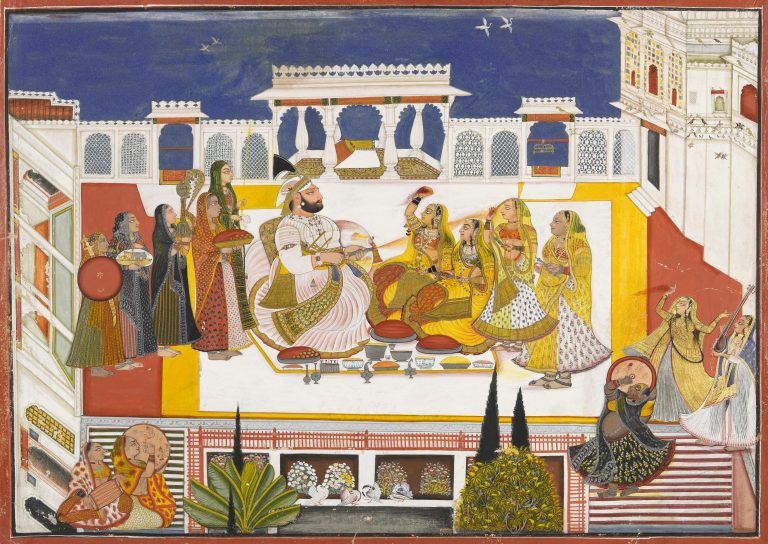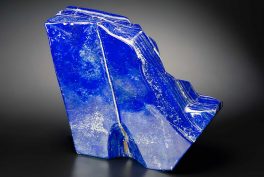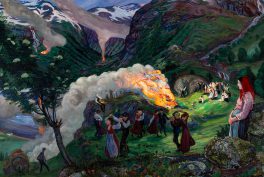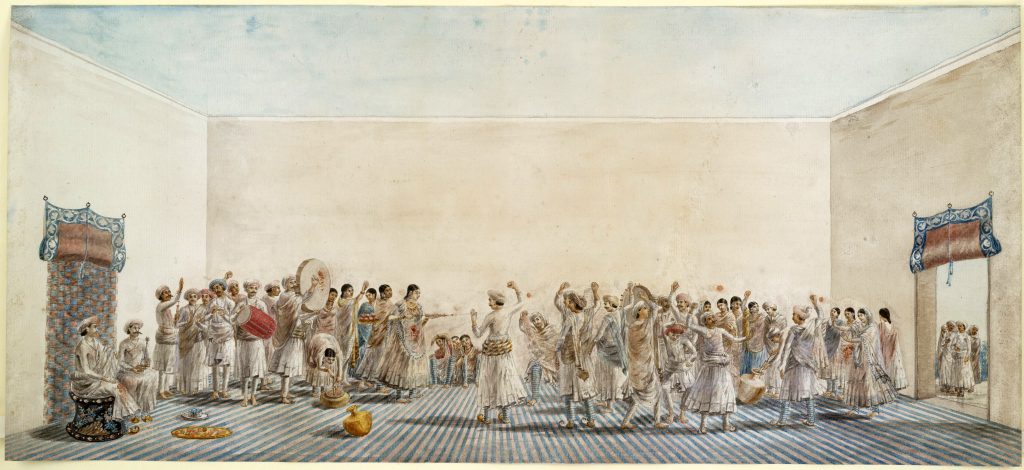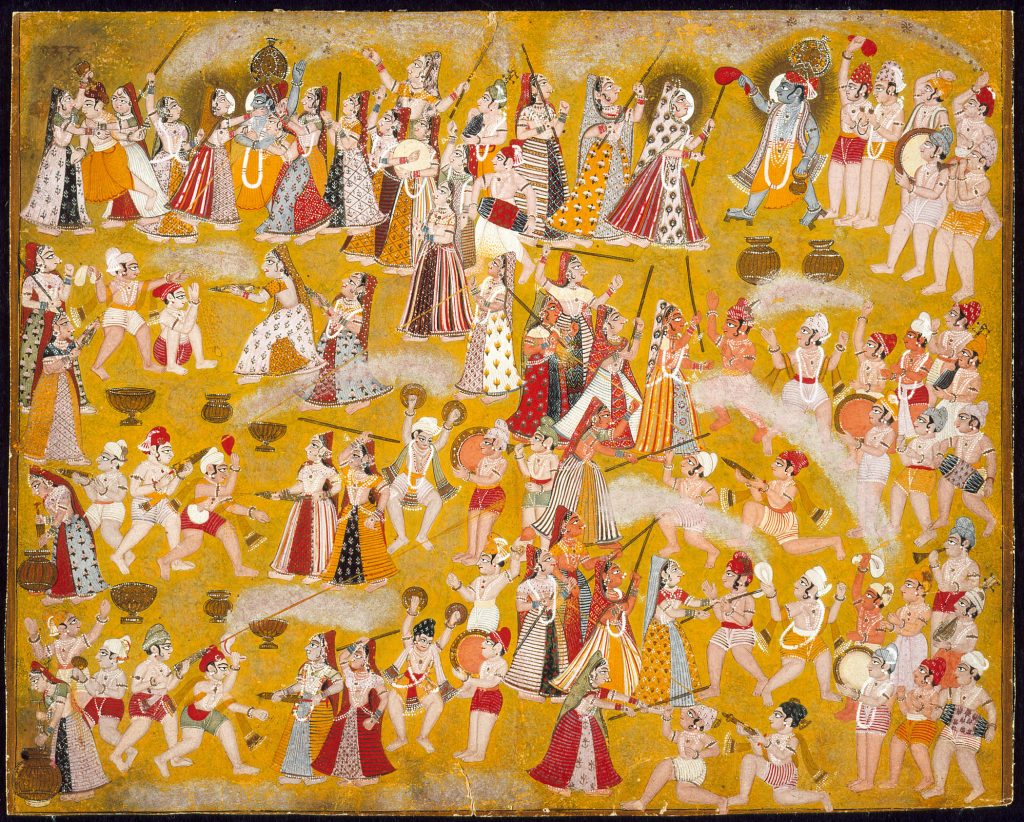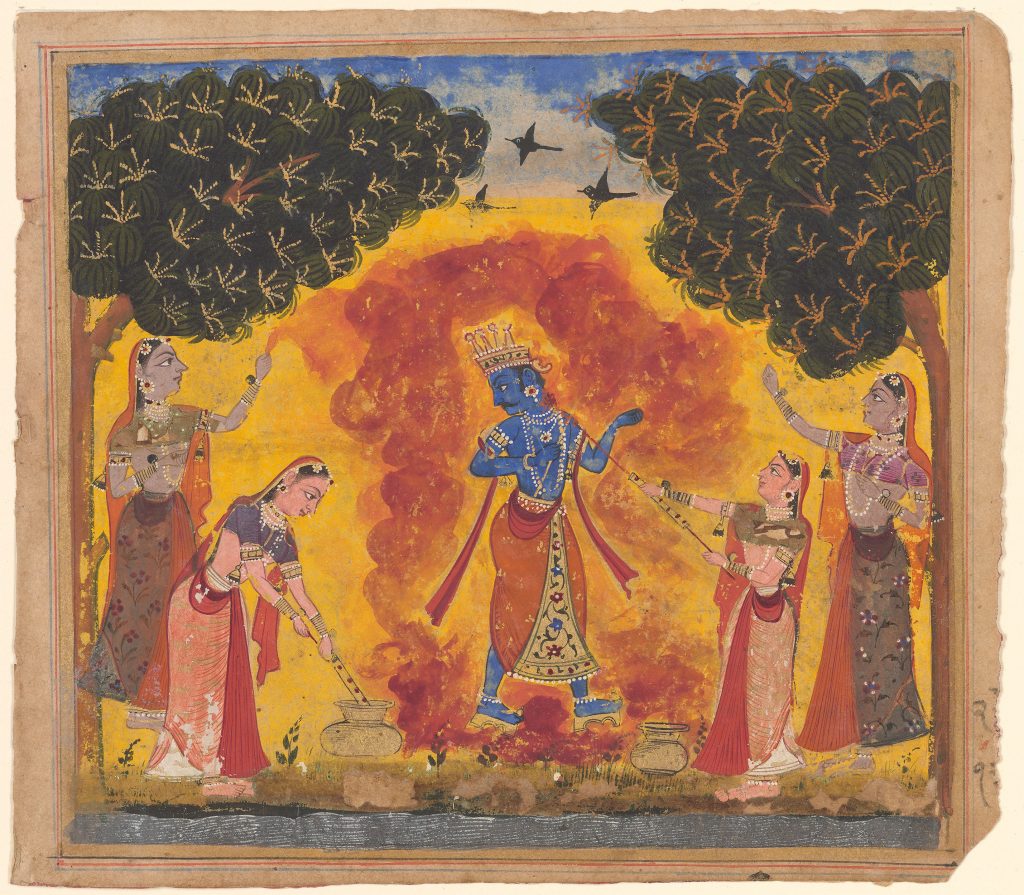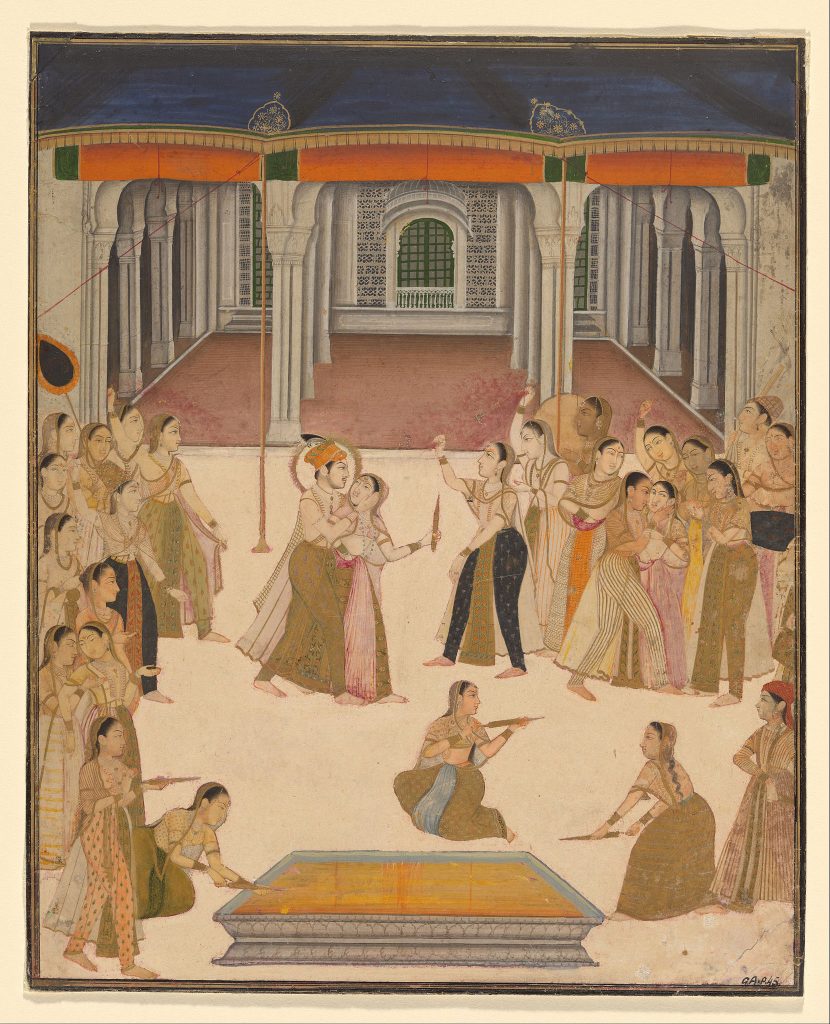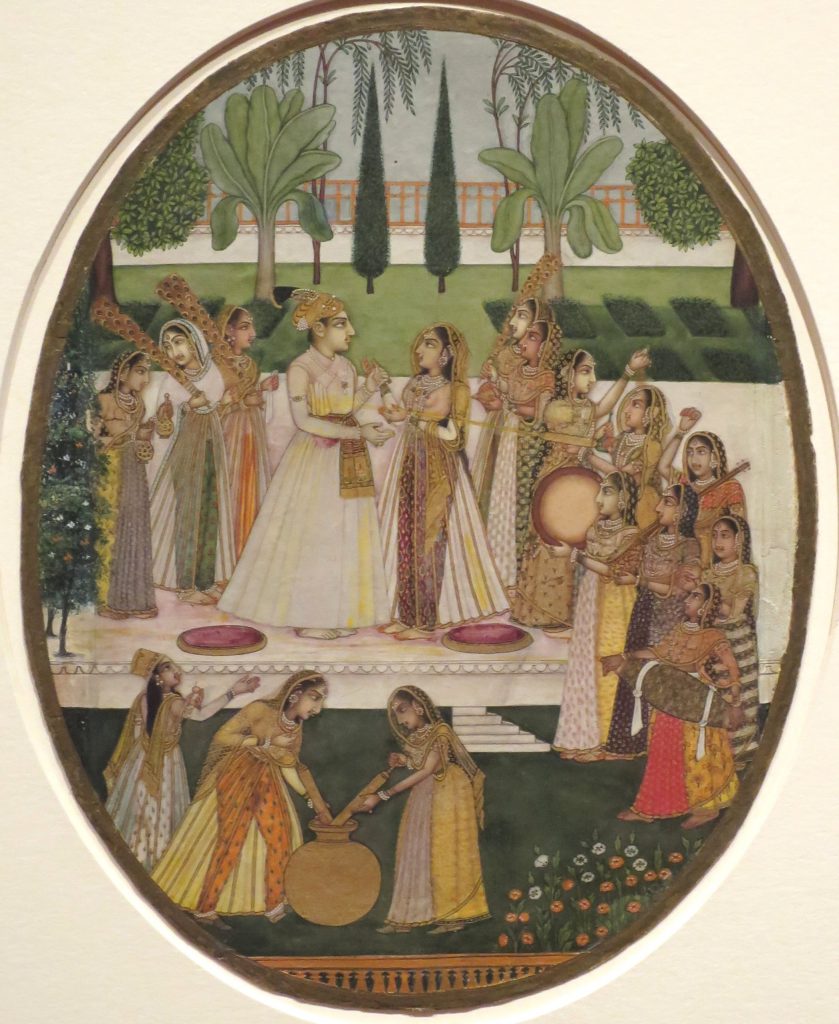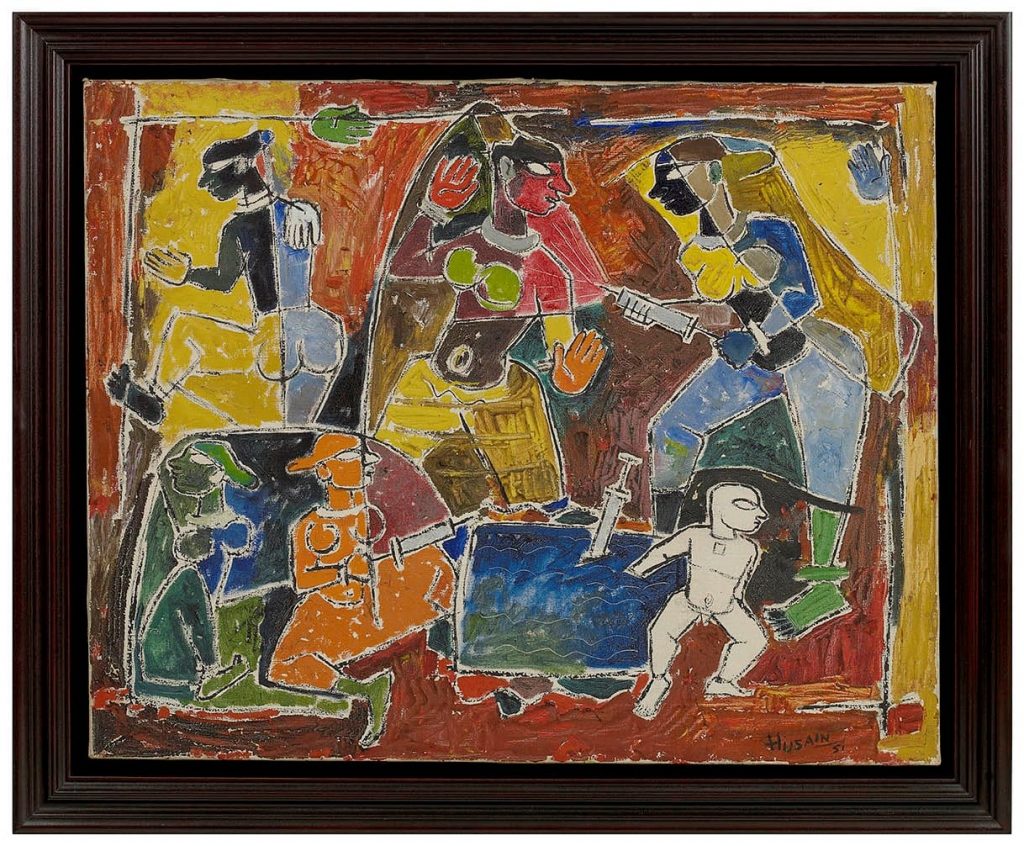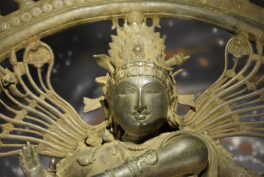Ancient Roots of Spring Festivals
The festivities of Holi begin on the evening of the full moon day, known as Purnima, in the month of Falgun, starting with the traditional bonfire known as the burning of Holika. Like many spring festivals, Holi has ancient origins deeply rooted in Hindu mythology and Vedic texts.
The Legend of Prahlad
Dominant lore associated with Holi is the legend of Prahlad. Prahlad was the son of the evil asura ruler, Hiranyakashyap, a formidable being who had gained unmatched power from the gods by performing yogic austerities. Unlike his father, Prahalad was a pious child and an ardent devotee of Vishnu. This devotion greatly irked Hiranyakashyap and led him to make several unsuccessful attempts to end his son’s life.
Frustrated with his failures, Hiranyakashyap turned to his sister Holika, who had a divine boon that made her immune to fire. Upon Hiranyakashyap’s instructions, Holika carried her innocent young nephew into a bonfire. However, when Holika took Prahlad onto her lap, Vishnu intervened and Prahalad remained unscathed while Holika was consumed by the flames. Thus, the tradition of the burning of Holika was born, symbolizing the triumph of good over evil.
The Revelry of Krishna
The depiction of Krishna, who is closely associated with Holi, is a common element in Holi-themed artwork. Popular lore associated with the celebration of Holi lies in tales of Krishna and his playful interactions with milkmaids or gopis in his childhood home of Vrindavan. According to legend, Krishna and his companions would throw colored powders and water at each other in celebration. This act of revelry is the hallmark of Holi and continues to form an important part of Holi celebrations today.
Long Tradition of Artistic Inspiration
At its core, Holi is a celebration of colors that envelopes its participants during the festivities. The explosion of colors creates a spectacular visual that has inspired countless artists from antiquity to contemporary canvases as well as one the silver screen.
Indian miniature paintings from Rajasthani and Mughal ateliers along with Indian art forms like Madhubani and Pichwai, incorporate the exuberant scenes of Holi as well as the romantic antics of Krishna and Radha amidst a riot of colors.
Holi has also influenced other mediums such as sculpture, dance, and literature. Traditional Indian dance forms, such as Kathak and Bharatanatyam, incorporate choreography inspired by the festivities. Sculptures and relief works in temples expertly capture the movement and energy of the festival. Furthermore, Holi is a recurring theme in Indian literature, music, and poetry, evoking the spirit of the festival.
Contemporary Interpretations of Holi
Holi has been featured in several Indian films and music videos, often as a vibrant and integral part of the storytelling that showcases the colors, emotions, and tremendous religious significance of this ancient festival and its continuing hold on modern Indian culture. The bursts of color and joyous celebrations imbibe a sense of unity that is truly the essence of this festival. In India, Holi has also become a major tourist attraction, bringing visitors from around the globe who want to witness and participate in colorful festivities.
Beyond the Indian subcontinent, today Holi is also celebrated in other parts of the world, gaining popularity and recognition beyond the Indian diaspora. The festival has become an occasion for people of different cultures and backgrounds to come together and embrace the spirit of Holi.
